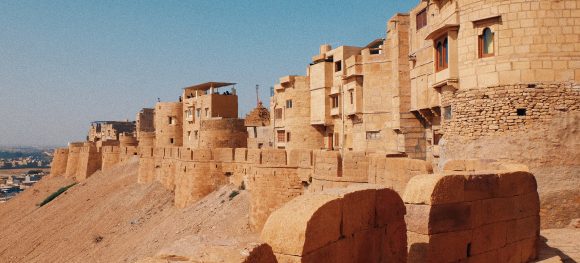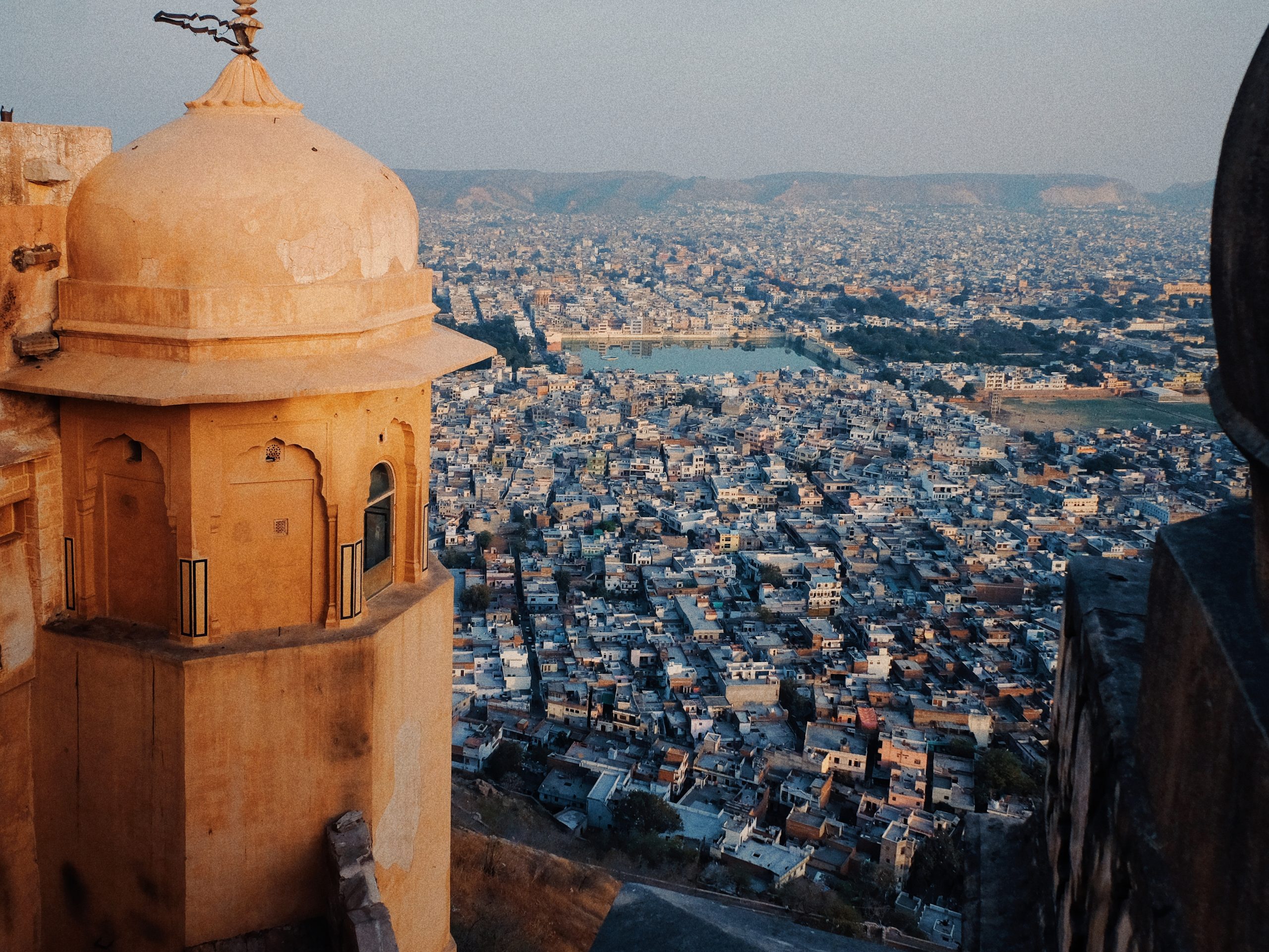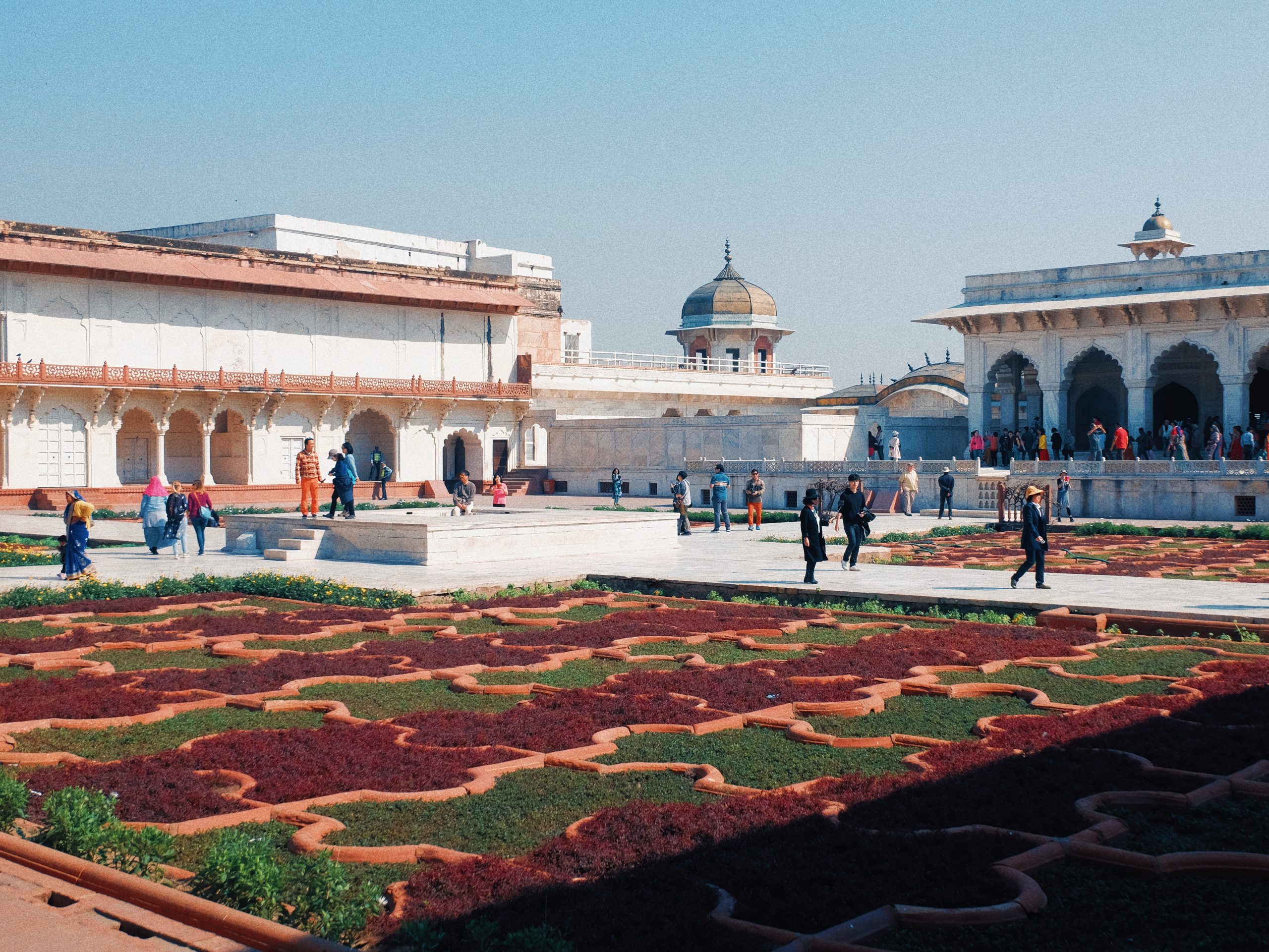



February 20, 2018. Jaisalmer Fort is a fortified city built on top of a desert outcrop in the middle of the vast Thar in northern India. Established in 1156 by the Rajput ruler Jaisal (hence, the name ‘Jaisalmer’), it continues to be inhabited by residents, which makes it one of the world’s remaining “living forts”.

Walking along the alleys in Jaisalmer Fort, I notice the color of almost all buildings is almost the same as the sands and stones of the desert. So when you look at the town from afar it literally looks like the town rose from the ground up. Jaisalmer is sometimes referred to as the golden city. Not difficult to see why, seen from the fort.

February 19, 2018. The palaces inside Amer Fort are composed of four different complexes with their own enclosures. The first one features a large plaza where troops celebrated their victories on their return from battle by parades in front of the royal family.

Once you enter the first palace, you’d be greeted by a beautiful garden courtyard magnificently manicured to reflect perfect geometries.



February 19, 2018. On my last day in Jaipur I proceeded to Amer (Amber) Fort a few kilometers north of the city. It is part of the three-fort complex that traverses ‘Eagle Hills’ and forms a sort of ‘great wall’ that was meant to protect the city from invaders. I visited the first of such forts (Nahargarh Fort) the day before. It is also called the Amber Palace because it served as the main residence of the Rajput Maharajas and their families for centuries. The fort overlooks a lake that, aside from serving as the main water supply of the fort, beautifully mirrors the amber colors of the palace on its surface.





One of the tourist highlights of a visit to the fort is the chance to ride elephants up the hill to the main entrance. Although this is one of the top tourist activities, I opted to just walk all the way up through beautiful stepped passages, not only because it felt like the ethical thing to do, but it also allowed me to take my time and take plenty of photos along the way. Just mind your steps as there are plenty of elephant dung as you cross the ‘elephant highway’.


February 18, 2018. Rajasthan is not named “the land of kings” for nothing. Its cities feature monuments, forts and palaces of the different families that ruled the land over the centuries. The day before, I visited the City Palace in the center of the city’s old district. This day, I visited another one of such palaces–the Hawa Mahal.



Known as the ‘Palace of Winds’, the Hawa Mahal is a complex with a five-storey building that was built in 1799 by the ruling maharaja at the time. The main palace features a facade that looks like a honeycomb, decorated with almost a thousand small window openings adorned with intricate designs. The main reason behind the making of Hawa Mahal was for Rajput women who were not allowed to appear in public places. Through the small windows, the women were able to watch royal processions and see the city from behind the walls, without people from the outside being able to see those behind.


February 15, 2018. I spent the morning at Agra Fort, or the “red fort” to the west of the Agra, a walled enclave similarly established along the banks of the Yamuna River like the Taj Mahal. Initially built as a military fort, it also later on served as a palace for those who ruled this part of India. It changed hands in as many times as it was occupied by the different groups that tried to govern this part of the subcontinent over the centuries from the Lodi Dynasty of the Delhi Sultanate, the Mughal Empire and the Maratha Dynasty, before finally falling into the hands of the British. Today, parts of it is still reserved for the use of the Indian army.


The entire fort is around 34 hectares, and houses dozens of different structures within its 21.4 meters high fortifications. I explored the fort without a tour guide, so most of the information I now know about it came from readings I did after my visit. Nonetheless, my impression of its elaborate architecture at that time is just as amazed as I am still now of its rich history.
At its peak in the late 1600’s, the Mughals ruled from what is modern-day Afghanistan all the way to today’s Bangladesh. Despite being a muslim dynasty with Turk-Mongol and Persian roots, it effectively administered a vast empire of diverse religions (predominantly Hindu), cultures and traditions, through tolerance and alliances.
The Mughals built grand forts, palaces and monuments (such as the Taj Mahal) that rivaled Western architecture and engineering. The Mughal economy also accounted for a fourth of world trade. It was considered India’s last “golden age”.
